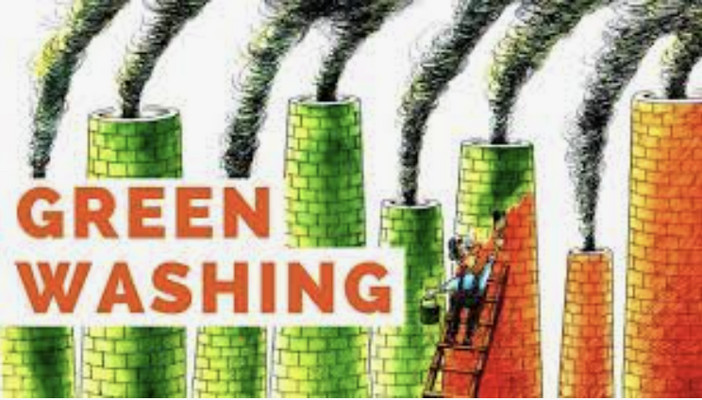The Rise of Greenwashing and the Need for Transparency
In a world increasingly concerned about the environment, consumers are seeking out sustainable products and services. However, the surge in demand for eco-friendly options has also led to a rise in greenwashing—where companies make misleading or exaggerated claims about their environmental impact.
This deceptive practice erodes consumer trust and undermines the credibility of genuine sustainability efforts. Consumers are becoming more discerning and are demanding proof of a company's commitment to environmental responsibility.
The Challenges of Green Claims
The challenge lies in striking a balance between communicating a company's sustainability efforts and avoiding misleading consumers. Companies need to be transparent about their practices, using data and evidence to back up their claims.
A Shift in Consumer Expectations
The global landscape is evolving in such a way where impact parameters of a company are deciding long-term growth and have an almost immediate effect on revenue and reputation. Consumers want to be able to compare products based on price, benefits and the emissions and impact associated with it.
The Need for Data-Driven Transparency
With inaccurate data clouding the reality of environmental impact, consumers who believe they are making responsible choices are misled. This calls for accurate measurement of the carbon footprint of products and services offered to the public.
How to Avoid Greenwashing and Communicate Sustainability Effectively
Here are some key strategies for companies to communicate their sustainability efforts authentically and effectively:
1. Be Transparent and Authentic
Companies that are transparent and truthful about their offerings are more likely to develop a loyal customer base. The level of business transformation required for operational efficiency and authenticity to promote long-term growth requires active engagement from the board and CXOs. The lens through which ESG is seen needs to be changed from the top-down in an organization. If lowering emission drove the board agenda, sustainability can be seen as a core objective, and the business growth will be exponential.
2. Align Marketing and Sustainability Departments
Marketing and communication processes need to change to include sustainability validations and collaborations with sustainability departments. Internal processes must be set up to ensure claims are checked and verified before campaigns are published. Building capacity within marketing teams to understand sustainability is also crucial. This collaboration helps to ensure that marketing messages are aligned with the company's actual sustainability practices.
3. Conduct a Life Cycle Assessment
Start with a science-based approach and have your data ready. Conduct a double materiality analysis to understand your company's impact on sustainability and vice versa. For products, perform a full lifecycle assessment to measure the carbon footprint and other impacts. This thorough evaluation helps identify the environmental impact of your products from raw material extraction to disposal.
4. Focus on Materiality
Materiality involves focusing on significant aspects of your product's lifecycle. For example, in a buckle made of a magnet and plastic, the magnet's carbon footprint might be higher. Communicate about what you're doing to address the largest impact. Transparency is key, as shown by brands like Rab, which disclose recycled materials and environmental impact clearly.
5. Be Complete in Your Communication
Completeness means covering the entire lifecycle of a product, not just optimized processes. For instance, if you use recycled plastic in a product, provide the carbon emission savings for the entire product, not just the plastic component.
6. Use Clear and Precise Language
Precision involves targeting consumer groups appropriately and using clear, understandable language. For example, if you use recycled PET for polyester, be transparent about where the material comes from and its end-of-life recycling potential. Puma provides a good example by clearly stating the sources of recycled materials in their soccer jerseys.
7. Get External Validation
Verification means getting external validation for your claims. With over 200 sustainability labels out there, it's essential to use externally verified labels to ensure transparency. Brands like Picture Organic Clothing work with Clear Fashion to provide detailed product ratings.
8. Engage with Consumers
It's crucial to keep communicating because consumers' decisions impact the planet. For example, if a raincoat generates 70kg of CO2 emissions over its lifecycle, millions of such purchases add up significantly. Offering products with lower emissions can make a big difference. The EU has regulations to ensure consumers are better informed and not misled by vague claims. Achieving net zero greenhouse gas emissions by 2050 requires collective action from all sectors, including consumers making informed choices.
The Future of Sustainability Communication
The evolving regulatory landscape and increasing consumer awareness are driving the need for more transparent and credible sustainability communication. By adhering to these principles, companies can avoid greenwashing accusations and build trust with consumers, fostering a more sustainable future.
Conclusion: Sustainable Practices for a Sustainable Future
As consumers become more informed and demanding, brands must evolve their approach to sustainability communication. By embracing transparency, data-driven claims, and external validation, brands can build trust, drive positive change, and contribute to a more sustainable future. This shift from greenwashing to genuine sustainability is essential for creating a world where businesses and consumers can work together to protect our planet.

















